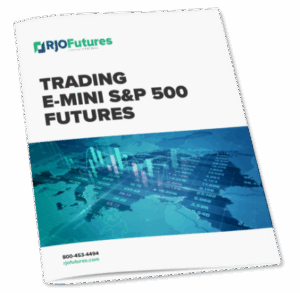A useful tool to trade the yield curve and Fed policy is the spread between 10-year notes and 30-year bonds. In the futures industry, this is commonly known as the NOB spread, or notes over bonds. One can trade spreads along the extent of the yield curve. The yield curve simply plots the yields on treasuries with varying maturities, typically three months to 30 years. However, the notes over bonds spread is highly liquid and a bit less risky than trading the very short end of the spectrum against the long end.
Going forward, we will be discussing trades involving the spread between the 10-year note and 30-year bond futures contracts. Remember, there is an inverse relationship between the price and the yield of these contracts. Thus, if the price of a note or bond goes up, the yield goes down, and vice-versa. The price of treasury futures on the short end of the curve is typically lower than price on the long end. This is an important variable when discussing the narrowing and widening of the spread, and how to trade it.
Normal Yield Curve
A normal yield curve chart goes from the lower left and climbs to the upper right as the time to maturity of the treasuries increases. This is because investors typically demand a higher rate of return the longer their money is tied up.
Flattening Yield Curve
When the spread between short-term rates and long-term rates narrows, the curve flattens. This happens in a low inflation environment when investors don’t demand the higher long-term interest rates that they would in an inflationary period. It can also happen in a tightening credit environment, when banks tighten their lending during economic crisis. Over the last several years it has occurred because the Fed has been engaged in a Quantitative Easing program meant to bring the yields on the long end of the curve down. In any of these scenarios it would be advised to sell the note over bond. This would entail selling the 10-year note and buying the 30-year bond. The expectation being that the yield on the note will rise in relation to the yield on the bond. Another way to look at it is that the bond yields will fall in relation to the note yield.
Steepening Yield Curve
Conversely, during inflationary times long-term rates will rise relative to short-term rates, creating a steepening of the yield curve. Naturally, investors will demand a higher yield as time to maturity increases, due to the corrosive effects of inflation. Under these conditions one would buy the NOB, by buying the 10-year and selling the 30-year. Again the inverse relationship of price to yield is in play. The price spread between the 10 and 30 will narrow as the yield between the two widens.
Changed To Bond Yield Curves
As a practical matter, one could use the notes over bonds spread to take a position ahead of a Fed move on rates. Thus, the trade would be to buy the NOB, going long the 10-year note and short the 30-year bond. The long end is also more sensitive to rate hikes. The prices at the long end of the curve will also fall the most if the bubble bursts, causing a further steepening of the curve. From a risk management standpoint it may make more sense to buy the NOB rather than selling the 30-year bond future outright. This is because the 10-year note should trade in the same direction as the bond, albeit at a slower pace, thus mitigating losses if the bond does the opposite of anticipated, and trades up. The NOB spread also commands a lower initial margin than an outright bond position.
In conclusion, the NOB spread can be utilized to take a directional position on the price of the futures contracts, or the dynamics of the yield curve. Just depends from which angle you are looking at the trade.



